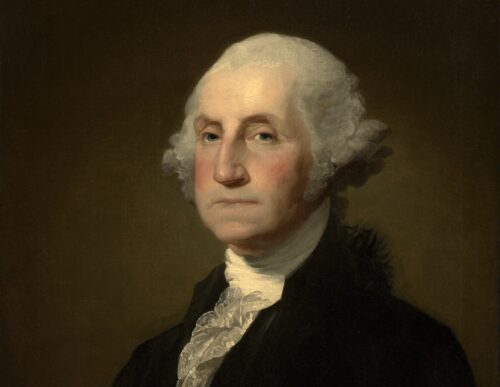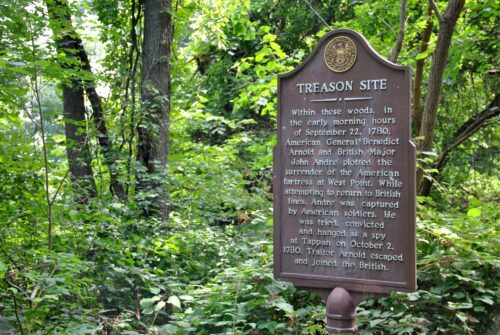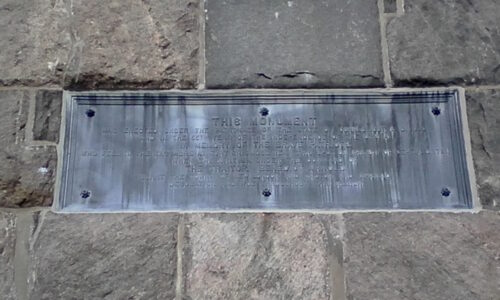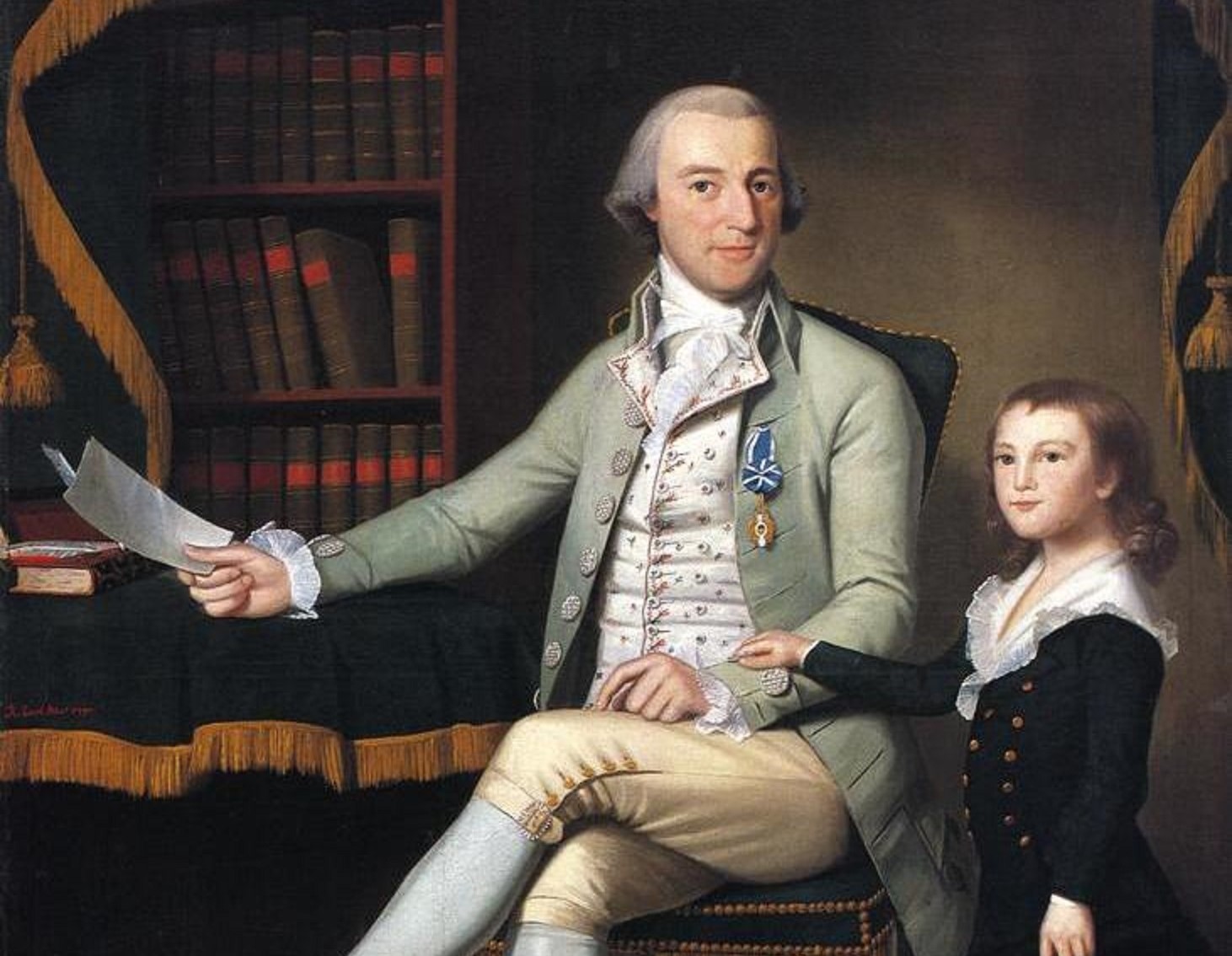Major Benjamin Tallmadge, founder of the Culper Spy Ring
There is nothing more necessary than good intelligence to frustrate a designing enemy, & nothing that requires greater pains to obtain.” — George Washington
The Culper Spy Ring was a secret network of American spies that operated during the Revolutionary War. It was masterminded in October 1778 by George Washington and Major Benjamin Tallmadge, a cavalry officer and a friend of George Washington, who wanted to gather intelligence from the British-occupied New York City. The name “Culper” came from Culpeper County, Virginia, where Washington had lived and worked as a surveyor in his youth. Although Washington had a limited budget, he devoted nearly one-fourth of it to the spy ring.
The main members of the spy ring were Abraham Woodhull, a farmer from Setauket, Long Island, who used the alias Samuel Culper Sr.; Robert Townsend, a merchant and journalist from New York City, who used the alias Samuel Culper Jr.; Caleb Brewster, a blacksmith and lieutenant in the Continental Army, who commanded a fleet of whaleboats against British shipping; Austin Roe, a tavern keeper from Setauket, who acted as a courier between Woodhull and Townsend; and Anna Strong, a neighbor of Woodhull, who used clotheslines to signal Brewster’s location. The spy ring also had several sub-agents, couriers, and support personnel who helped them communicate with each other and with Tallmadge, who used the alias John Bolton. Tallmadge was the direct contact of the spy ring, but Washington often directed their operations.

The Culper Spy Ring provided valuable information to Washington, such as the British plans to attack the French forces in Newport, Rhode Island, before they had recovered from their long sea voyage. The spy ring also discovered that the British planned to counterfeit American money using the same paper as the Continental dollars, which would have devalued the American currency and weakened the economy. The spy ring also uncovered the treason of Benedict Arnold, who planned to surrender West Point to the British in exchange for money and rank. The spy ring obtained a copy of Arnold’s correspondence with Major John André, a British officer who acted as a go-between. The spy ring alerted Washington about Arnold’s plot and André’s capture, which prevented West Point from falling into British hands.

Major John André was apprehended by three American militiamen on 23 September 1780, near Tarrytown, New York. They searched him and found incriminating papers hidden in his boot that revealed Arnold’s plot to betray West Point. André tried to bribe them with money and his gold watch, but they refused and took him to an American outpost. André was brought before a board of officers appointed by Washington on 29 September. He admitted that he was a British officer on a secret mission and that he had changed into civilian clothes after meeting with Arnold. He requested to be shot as a soldier rather than hanged as a spy, but his request was denied. He was sentenced to death by hanging on 2 October. He faced his execution with dignity and courage. He wrote a letter to Washington asking for his personal effects to be returned to his family and friends in England. He also wrote a farewell letter to his commander Sir Henry Clinton, expressing his gratitude for his kindness and protection. He dressed in his best uniform and walked calmly to the gallows. He refused a blindfold and adjusted the noose around his neck himself. He uttered his last words: “I pray you bear me witness that I meet my fate like a brave man.” He was hanged at noon in front of thousands of spectators.

Benedict Arnold managed to escape to New York City with his wife Peggy and their infant son Edward on 25 September 1780, after learning that André had been captured by American forces. Arnold was commissioned as a brigadier general in the British Army and given command of a Loyalist legion called the American Legion. He led several raids against his former countrymen in Virginia and Connecticut, but he was despised by both sides and accused of atrocities by the Americans. He received only £6,000 from the British for his services, instead of £20,000 he had demanded for betraying West Point. He also faced lawsuits from merchants who claimed he owed them money. He moved to London in 1782 with his family, hoping for more recognition and rewards from King George III, but he was largely ignored and distrusted by the British government and society. He tried to engage in trade with Canada and the West Indies, but he met with little success and accumulated more debts. He died in London on 14 June 1801, at age 60, after suffering from gout and dropsy. He was buried at St Mary’s Church in Battersea with no military honors.

The impact of the Culper Spy Ring on the American Revolution was significant. The spy ring helped Washington and the Continental Army to gain an advantage over their British enemies by providing them with timely and accurate intelligence. The spy ring also helped to foil several British plots that could have changed the course of the war. The spy ring enabled Washington to keep his army intact and to prevent large numbers of British soldiers from leaving New York. The spy ring also contributed to the French alliance with the Americans by saving their troops from a British ambush in Rhode Island. The spy ring also obtained a copy of the British naval codes in 1781, which gave the French navy an edge over the British fleet during the Battle of Chesapeake. This naval victory paved the way for Washington’s siege of Yorktown, which forced the British to surrender and ended the war.
The spy ring obtained a copy of the British naval codes by intercepting a packet boat that was carrying them from New York to Admiral Graves in Chesapeake Bay. The packet boat was captured by Caleb Brewster and his whaleboat crew on 21 August 1781. Brewster delivered the codes to Tallmadge, who forwarded them to Washington. Washington then sent them to Admiral de Grasse, who commanded the French fleet. De Grasse used the codes to decipher the British signals and movements during the Battle of Chesapeake on 5 September 1781. The French fleet defeated the British fleet and prevented them from rescuing Cornwallis at Yorktown.
*The views and opinions expressed on this website are solely those of the original authors and contributors. These views and opinions do not necessarily represent those of Spotter Up Magazine, the administrative staff, and/or any/all contributors to this site.

